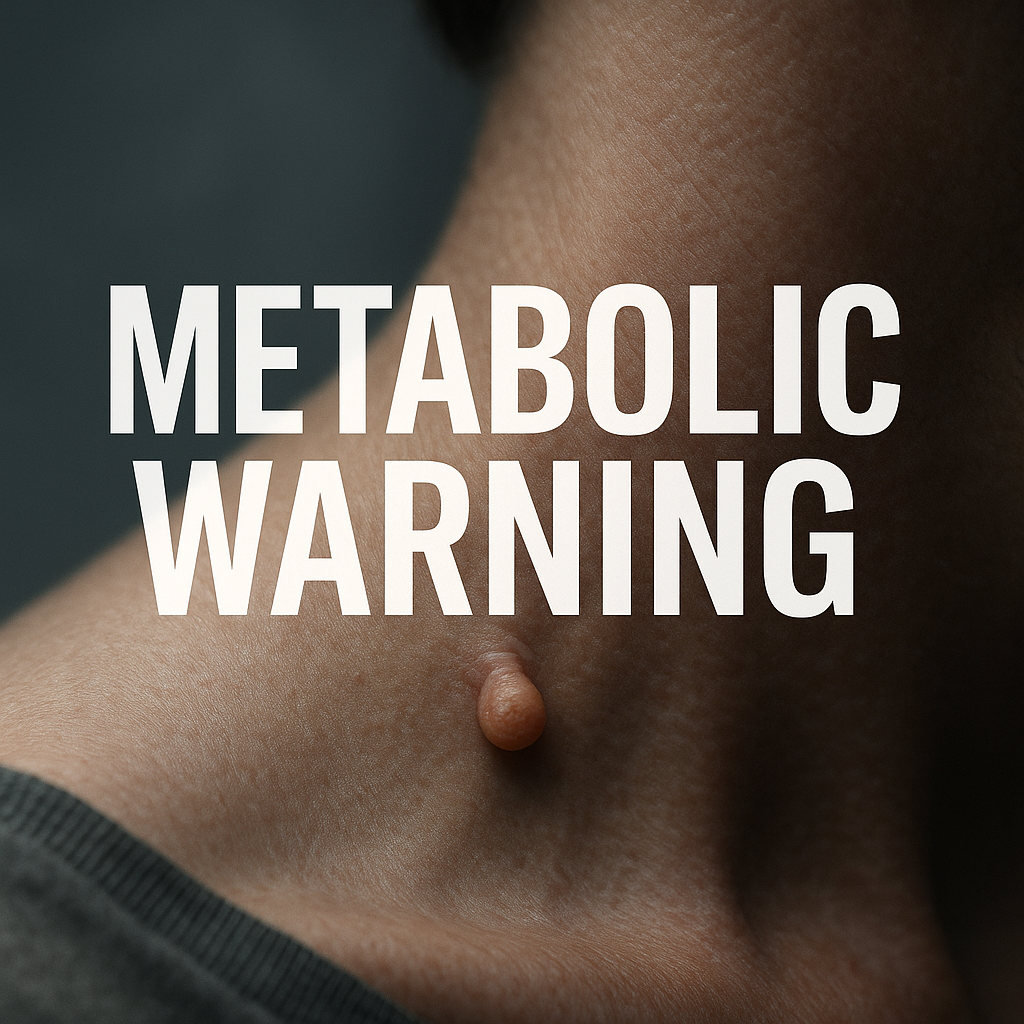
Skin Tags: The Tiny SOS Flags for Metabolic Chaos
Share ❤️
Skin tags — those soft, fleshy bumps on your neck, underarms or eyelids — rarely make headlines. Most people clip them off and carry on. But the science is blunt: patients with skin tags are more than 11 times more likely to have metabolic syndrome — the dangerous cocktail of central obesity, high blood sugar, abnormal lipids and hypertension. That’s not a typo. Your skin isn’t just cosmetic; it’s a messenger. Those little bumps may be screaming for you to stop ignoring your metabolism.
Your Waistline Tells the Truth
Solution #1: Take a hard look at your waist. The study compared 70 people with skin tags to 70 without and found significantly larger waistlines in the skin‑tag group. Central obesity isn’t about vanity; it’s about visceral fat strangling your organs. When your belly fat balloons, insulin resistance rises, blood pressure ticks up and your risk of heart disease skyrockets. Don’t dismiss a bulging midsection as “baby weight”. Grab a tape measure (inches and centimetres), breathe normally, and measure around your navel. If it’s above 40 inches (102 cm) for men or 35 inches (88 cm) for women, your body is flashing a red light.
Cholesterol Red Flags
Solution #2: Mind your HDL. People with skin tags in the study had lower levels of the “good” HDL cholesterol and higher triglycerides. HDL acts like a street sweeper, clearing cholesterol from arteries. When it drops, plaque builds and your cardiovascular risk climbs. Swap processed carbs for healthy fats like avocados, extra‑virgin olive oil, and wild‑caught fish. Don’t fall for cholesterol myths. Your body needs fats to thrive; it needs the right kind in the right ratios. And if a tiny skin flap is telling you your HDL is low, listen.
Blood Sugar & Pressure Storm
Solution #3: Get serious about glucose and blood pressure. The same research found higher rates of diabetes and hypertension in the skin‑tag crowd. Elevated blood sugar silently corrodes nerves, kidneys and eyes. High blood pressure pounds at your blood vessels like waves against a cliff. Together, they set the stage for heart attacks, strokes and cognitive decline. If skin tags decorate your neckline, use them as a wake‑up call to check your fasting glucose (mg/dL and mmol/L), HbA1c, and blood pressure. Knowledge isn’t scary — ignorance is.
Here’s the twist: skin tags don’t cause metabolic syndrome; they reveal it. They’re like the check engine light on your dashboard. You can cover the light with a sticker or you can open the hood. Start with lifestyle basics: reduce refined sugar and alcohol, move your body daily, prioritise sleep and manage stress. Not because a dermatologist told you to, but because your skin did. When you see those fleshy tags, imagine your cells waving tiny flags saying, “Help — we’re drowning in insulin and lipids!”
Most health gurus will sell you creams; I’ll sell you awareness. Your body speaks plainly — why don’t you? Those harmless bumps are early warnings of hidden chaos. Will you rip them off and ignore the message, or will you use them as motivation to reclaim your metabolic health? Share this with a friend who thinks skin tags are “nothing” and drop your own story. Your future self will thank you.










